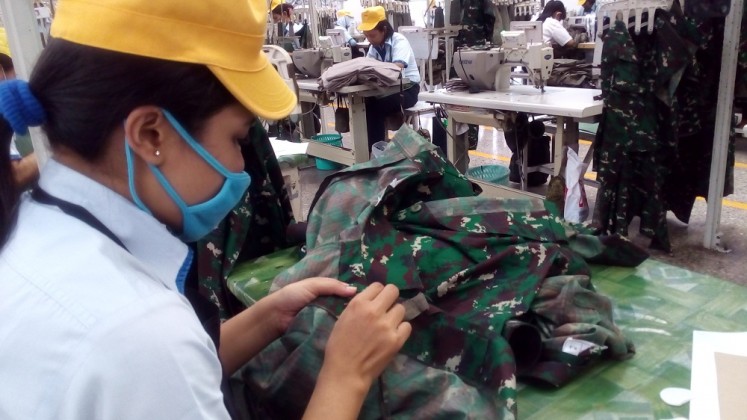Popular Reads
Top Results
Can't find what you're looking for?
View all search resultsPopular Reads
Top Results
Can't find what you're looking for?
View all search resultsSustainable power supply key to better electrification
The government may take pride in talking about achieving almost 100 percent electrification across the country, but questions over its sustainability linger as many power plants are often neglected, especially in remote regions
Change text size
Gift Premium Articles
to Anyone
T
he government may take pride in talking about achieving almost 100 percent electrification across the country, but questions over its sustainability linger as many power plants are often neglected, especially in remote regions.
A case in point is three small islands in Karimunjawa Islands in Jepara, Central Java, that each count on diesel-powered electricity plants, even though the local administrations installed renewable energy-powered plants years ago.
For many years, about 600 households on the three islands, namely Parang, Genting and Nyamuk, have been able to depend on only six hours of electricity per day from the three diesel-powered plants, each of which has a capacity of 600 watt-hour per day.
The power supply is only sufficient for small utilities, such as lights.
Karimunjawa Islands village leader Saptwagus Karnanejeng Ramadi said the regency long ago had a wind-turbine power plant (PLTB) built by the National Institute of Aeronautics and Space (Lapan), but it was damaged by corrosion.
“And then in 2009, we had additional PLTB and solar photovoltaic [Solar PV] power plants, but again, the problem was corrosion,” he said during a meeting with the press recently.
Although one might say that the villages can still be electrified by diesel-powered plants, the power supply is unreliable because of distance, a big problem when the weather is bad and diesel fuel supply is limited.
Despite the seemingly poor maintenance of power generators by local administrations, renewable energy may still emerge the savior for outer islands as it can generate electricity with an off-grid power plant and along the way reduce swollen budgets to buy diesel fuel.
The three islands in Karimunjawa are once again set to rely on Solar PV power plants for electricity as from this month, thanks to a Rp 180 billion (US$12.4 million) grant from the Danish government called the Environmental Support Program phase 3 (ESP3) to develop energy and environmental pilot projects in Indonesia, which has been ongoing since 2013.
The ESP3 is a collaboration program with the Energy and Mineral Resources Ministry, the National Development Planning Board (Bappenas) and the Environment and Forestry Ministry.
Once built, the roughly Rp 26 billion, three Solar PV power plants in Parang, Genting and Nyamuk will be capable of generating 1,500 watts per hour for each household for 24 hours, four times longer than the current six hours. Moreover, with a constant supply of electricity, students on the islands will be able to enjoy a breeze from fans installed in their classrooms, while local women can start home industries.
The soon-to-be local operators of the Solar PV power plants have expressed hope that the government will pay better attention to things, such as work safety equipment, the availability of work tools and more capacity building as they are unversed in the language used in the manual for the Solar PV machines.
In an effort to ensure proper maintenance of the facilities after the handing over of assets from donors to locals, the ESP3 program will focus on preparing an institution to be chosen as the overseeing operator, said ESP3 provincial program officer Muhammad Nurhadi.
“We hope that transfer of the assets [Solar PV power plants] will be realized soon to avoid damage and ensure clarity over who will be responsible for maintenance,” he said.
Cases of neglected power facilities are common in the country, as the government itself recently acknowledged that 68 renewable energy power plants worth Rp 305 billion were out of commission because of a failure in asset handover from the central government to regional administrations.
Government Regulation No. 27/2014 on management of state or regional items stipulates that an asset worth more than Rp 10 billion needs presidential approval. It is one of main causes of delays in handovers, an official said previously.










